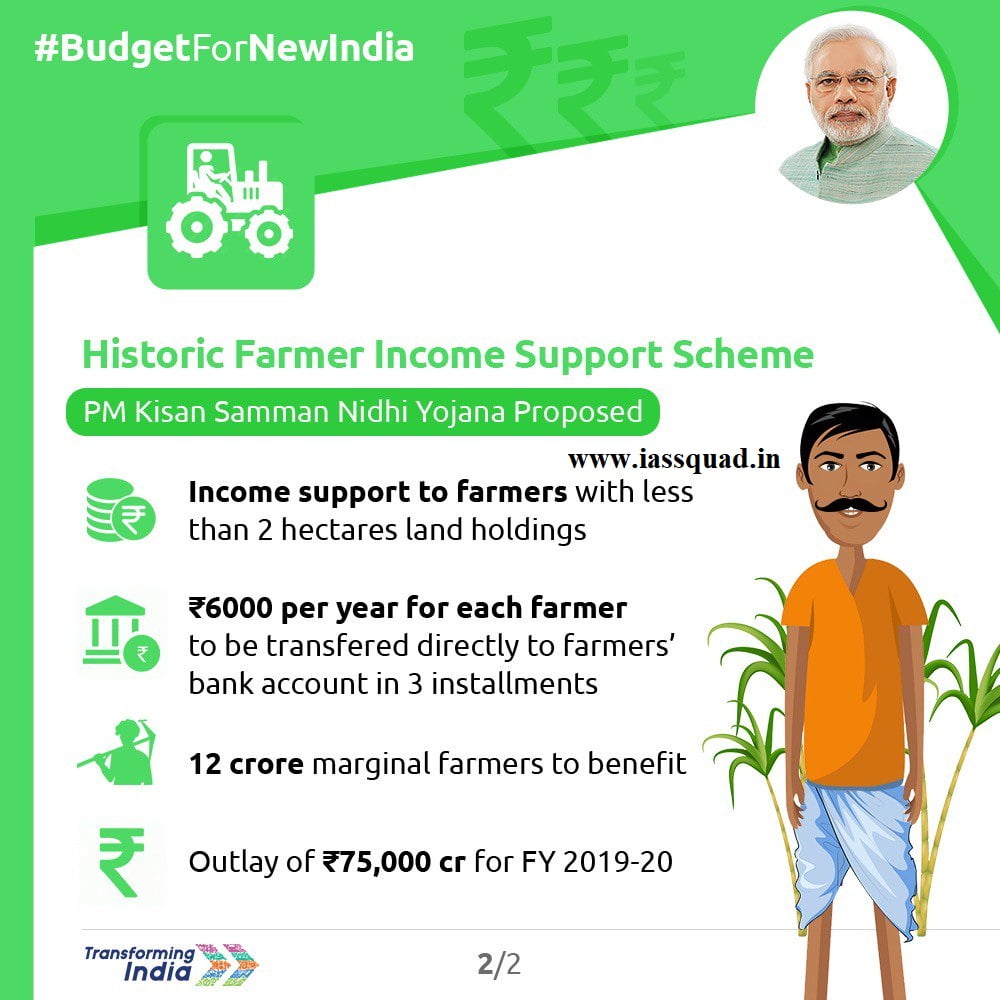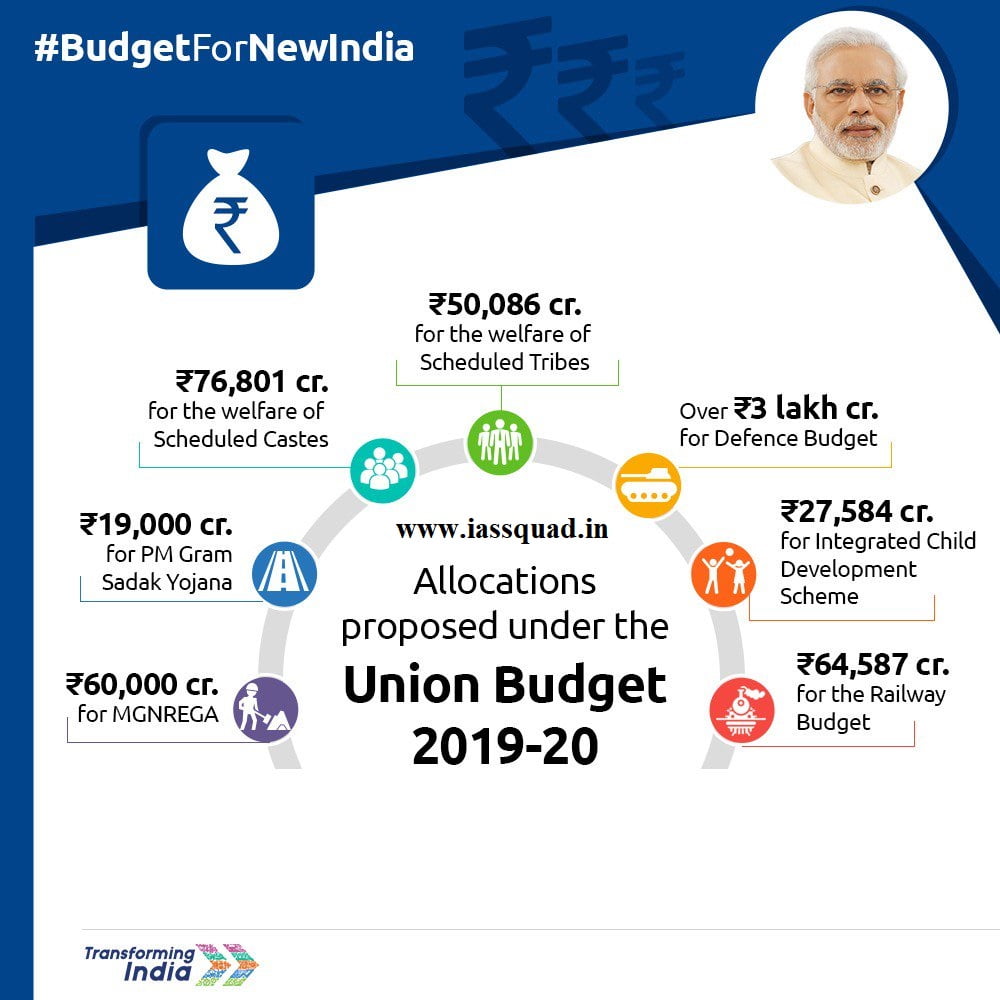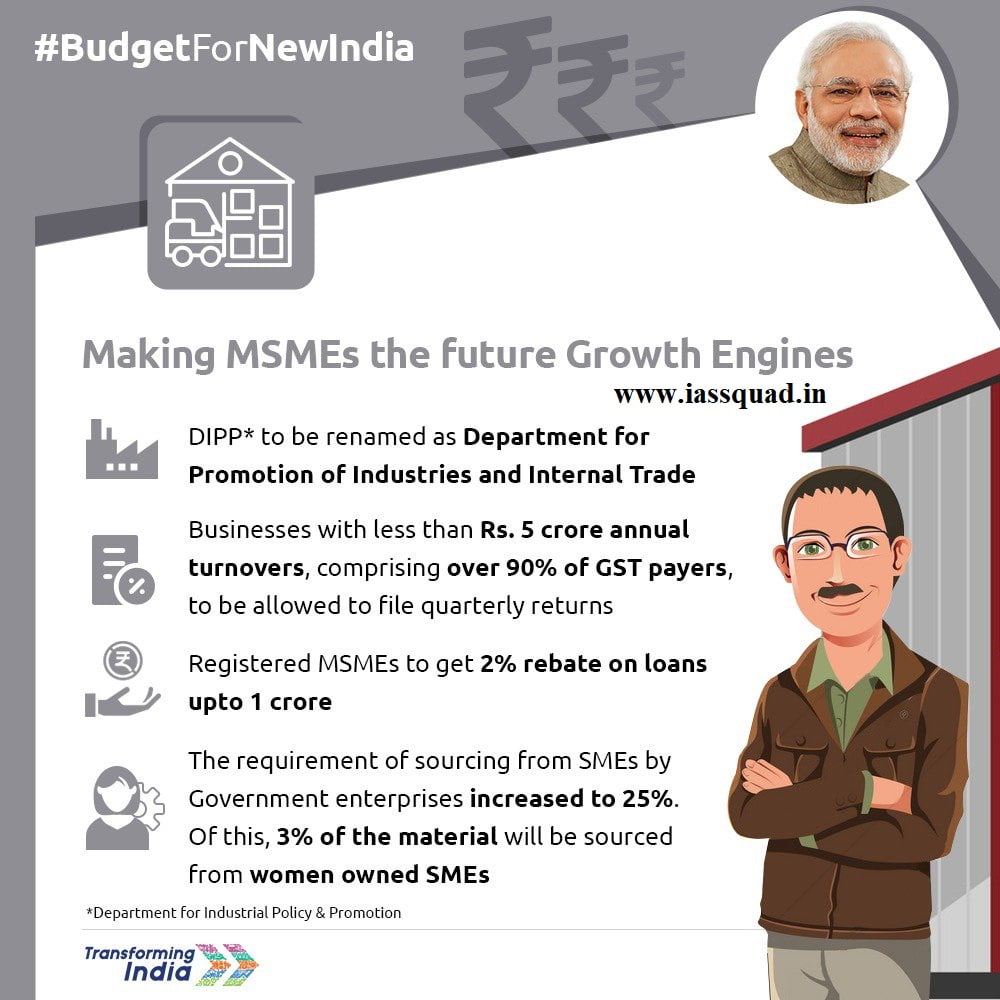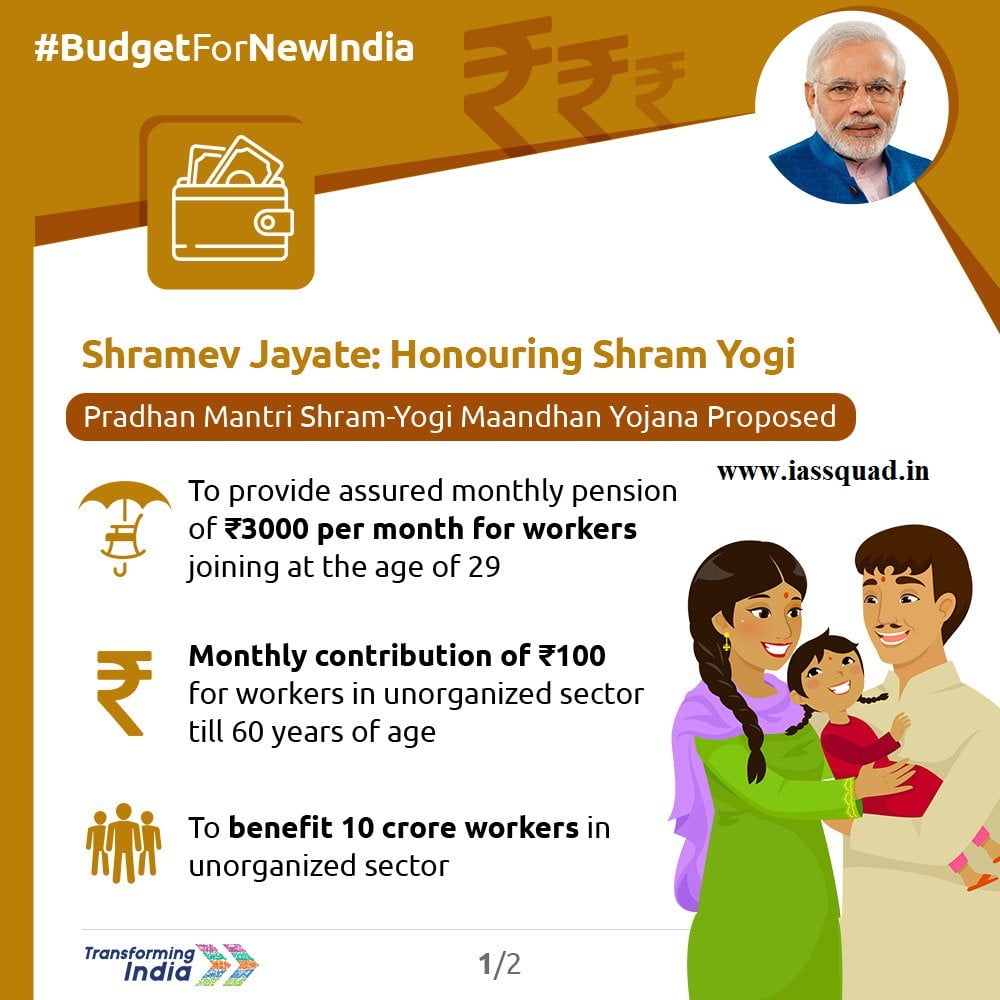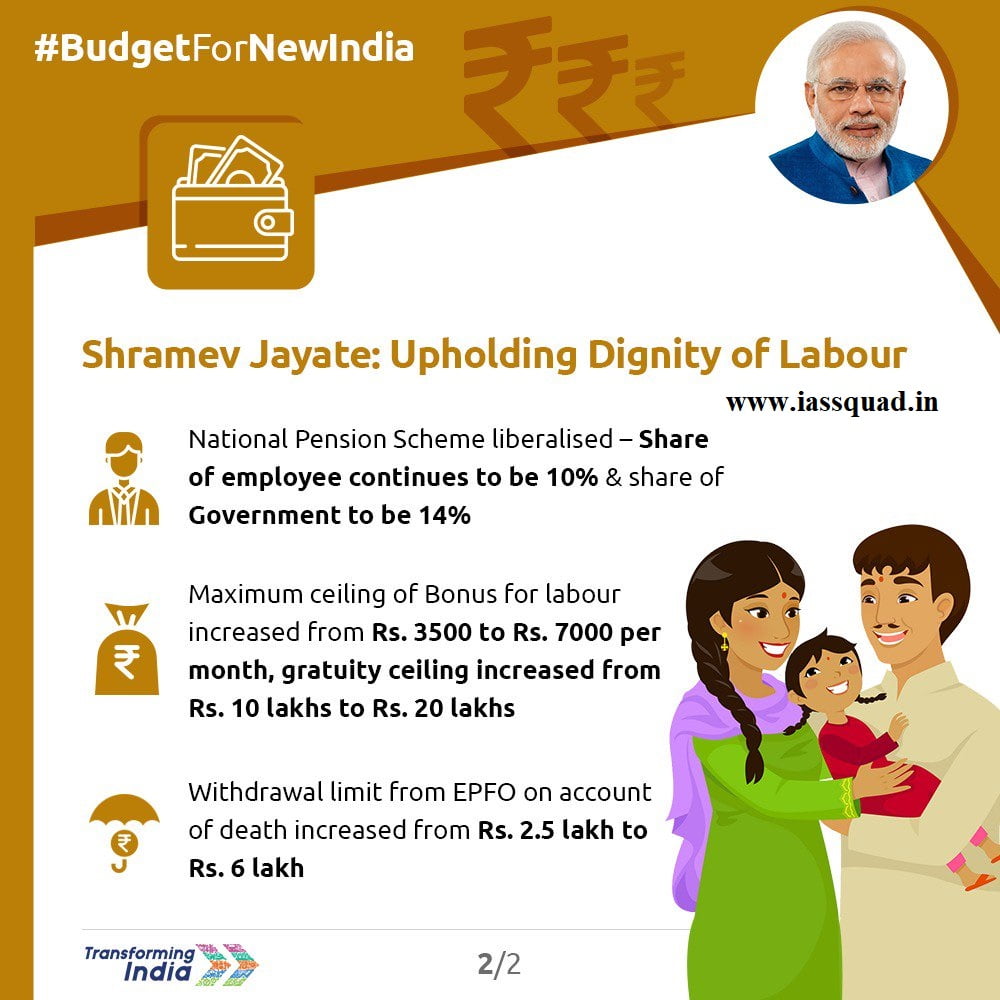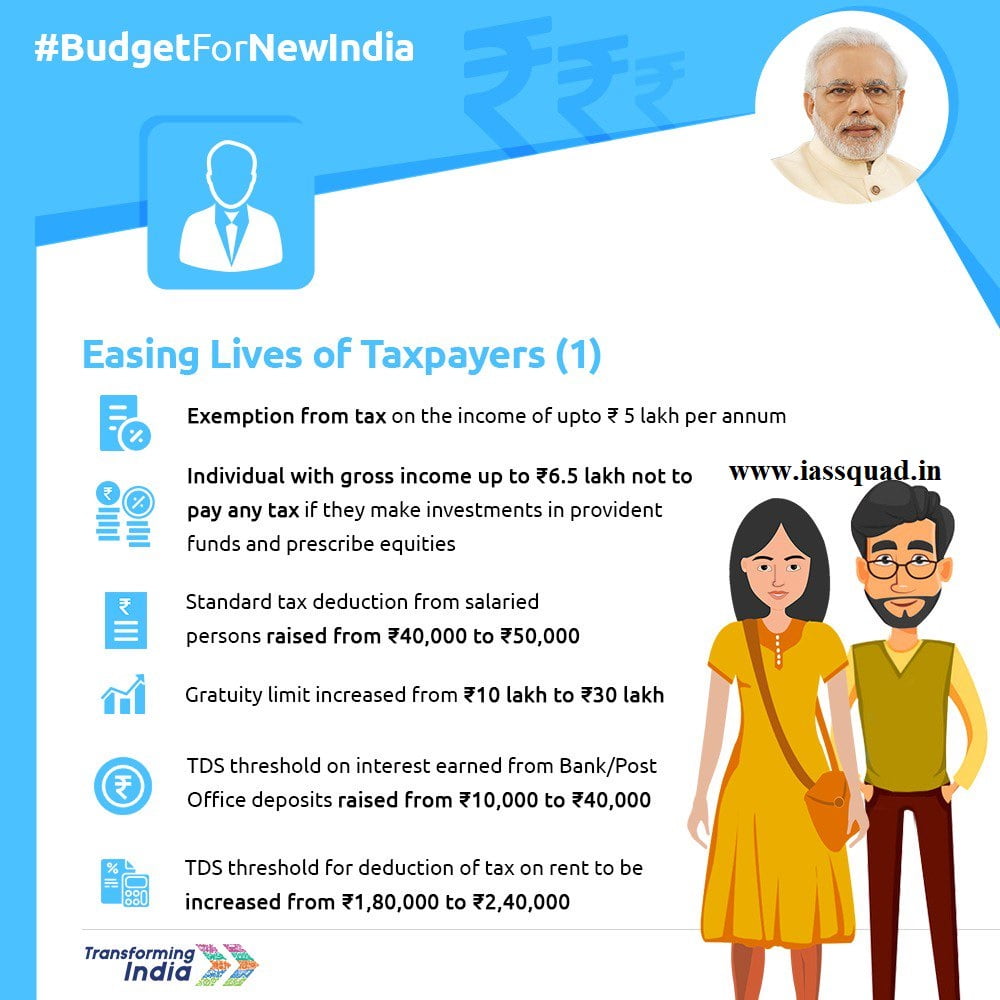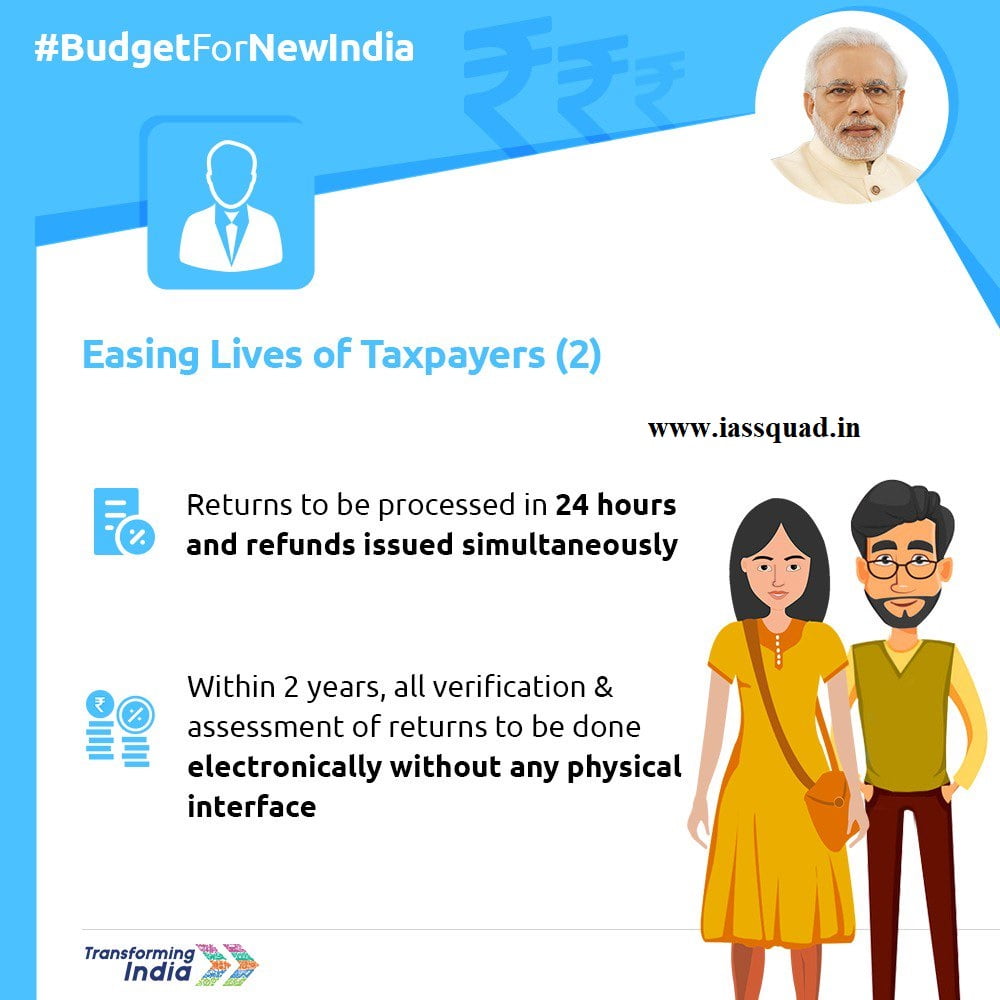Daily Current Affairs for UPSC CSE
Topics Covered
- Rashtriya Gokul Mission
- Budget highlights through Infographics
- Vision 2030
- National Mission on Interdisciplinary Cyber-Physical Systems (NM-ICPS) INFT
- Purchasing Manager’s Index
- Highlights of Budget
1 . Rashtriya Gokul Mission
Rashtriya Gokul Mission
Context : Union Finance Minister Piyush Goyal has allotted Rs. 750 crore to the Rashtriya Gokul Mission (RGM) under revised estimates for the financial year 2018-19.
What is Rashtriya Gokul Mission
- Rashtriya Gokul Mission (RGM) has been launched in December 2014 with an outlay of Rs 2025 crore for development and conservation of indigenous breeds through selective breeding in the breeding tract and genetic upgradation of nondescript bovine population.
- The scheme comprises of two components namely National Programme for Bovine Breeding (NPBB) and National Mission on Bovine Productivity (NMBP)
Objectives of RGM
- Development and conservation of indigenous breeds
- Breed improvement programme for indigenous breeds so as to improve the genetic makeup and increase the stock
- Enhancing milk production and productivity of bovine population by increasing disease free high genetic merit female population and check on spread of diseases
- Upgrading nondescript cattle using elite indigenous breeds like Gir, Sahiwal, Rathi,Deoni, Tharparkar, Red Sindhi
- Distribution of disease free high genetic merit bulls for natural service
- To bring all breedable females under organised breeding through AI or naturalservice using germ plasm of high genetic merits
- To arrange quality Artificial Insemination (AI) services at farmers’ doorstep
- To create e-market portal for bovine germplasm for connecting breeders and farmers;
Significant initiatives under RGM
- Awards for encouraging farmers/breeder societies to rear Indigenous breeds of Bovines
- Gopal Ratna awards: For farmers maintaining the best herd of Indigenous Breed(s) and practicing best management practices.
- Kamdhenu awards: For Best managed Indigenous Herd by Institutions/Trusts/NGOs/ Gaushalas or best managed Breeders’ Societies
- Gokul Gram
The Rashtriya Gokul Mission also envisages establishment of integrated cattledevelopment centres ‘Gokul Grams’ to develop indigenous breeds including upto 40%nondescript breeds.
- To promote indigenous cattle rearing and conservation in a scientific manner.
- To propagate high genetic merit bulls of indigenous breeds.
- To optimize modern Farm Management practices and promote Common ResourceManagement.
- To utilize animal waste in economical way i.e. Cow Dung, Cow Urine
E- Pashuhaat
The portal aims to be a
- E-Trading Market portal for livestock germplasm and additional related services.
- Will connect farmers with breeders – Central, State, Co-operative and private agencies.
- Real time authentic certified information on availability of germplasm.
- Centralized repository of information for Central and State Governments.
2 . Budget Highlights
Budget Allocation
Note : Images will be updated on our social networking sites
Fiscal Deficit
- Revised the fiscal deficit target for 2018-19 to 3.4% from 3.3%.
- It would be 3.4% in FY20
- 3% of fiscal deficit to be achieved by 2020-21
- Originally, the target was to reach a fiscal deficit of 3.1% of GDP by March 2020, and 3% by March 2021
3 . Vision 2030
Context : Interim Finance Minister Piyush Goyal on February 1 listed out the government’s 10-point economic growth plan for the coming decade.

4 . National Mission on Interdisciplinary Cyber-Physical Systems (NM-ICPS)
Context : Union Finance Minister Piyush Goyal’s announcement of a ‘National Programme on Artificial Intelligence’ ties into an existing programme led by the Union Science Ministry called the National Mission on Interdisciplinary Cyber-Physical Systems (NM-ICPS). The latter was cleared by the Union Cabinet last December at a total outlay of Rs. 3,660 crore for five years.
About National Mission on Interdisciplinary Cyber-Physical System
Background
- Cyber-Physical System and its associated technologies, like Artificial Intelligence (Al), Internet of Things (loT), Machine Learning (ML), Deep Learning (DP), Big Data Analytics, Robotics,Quantum Computing, Quantum Communication, Quantum encryption (Quantum Key Distribution), Data Science & Predictive analytics, Cyber Security for physical infrastructure and other infrastructure, have pervaded and is playing a transformative role in almost every field of human endeavour all most in all sectors.
- It has become imperative for government and industries to be prepared to adopt these emerging and disruptive technologies in order to remain competitive, drive societal progress, generate employment, foster economic growth and to improve the overall quality of life and sustainability of the environment.
Details
- The Mission addresses the ever increasing technological requirements of the society, and takes into account the international trends and road maps of leading countries for the next generation technologies. The mission implementation would develop and bring:
- Cyber Physical Systems (CPS) and associated technologies within reach in the country,
- adoption of CPS technologies to address India specific National / Regional issues,
- produce Next Generation skilled manpower in CPS,
- catalyze Translational Research,
- accelerate entrepreneurship and start-up ecosystem development in CPS,
- give impetus to advanced research in CPS, Technology development and higher education in Science, Technology and Engineering disciplines, and
- place India at par with other advanced countries and derive several direct and indirect benefits.
Impact
- CPS technologies provide a cutting edge to a Nation’s scientific, engineering, and technological innovative capabilities; support other missions of the government, provide industrial and economic competitiveness and have truly became a Strategic Resource. Volume, scale and complexity of emerging applications demand continued evolution of new technologies for the foreseeable future.
- The proposed Mission would act as an engine of growth that would benefit national initiatives in health, education, energy, environment, agriculture, strategic cum security, and industrial sectors, Industry 4.0, SMART Cities, Sustainable Development Goals (SDGs) etc.
- CPS is an integrated system of upcoming technology, which in turn is being taken up on priority basis by countries in the race for development. CPS will indeed bring a paradigm shift in entire skill sets requirement.
- The job opportunities will be enhanced through the Mission by imparting advanced skills and generating skilled manpower as per the requirement of the industry/ society. As Innovation, Entrepreneurship and Start-up Ecosystem is an integral part of the proposed NM-ICPS, the start-ups will also create a number of technology driven job opportunities in CPS and allied areas. Accordingly, it is estimated that, about 40,000 jobs will be created in the short term and about 2,00,000 in long term.
Benefits
- The Mission will feed the Central Ministries/ Departments and State Govts and also the Industry to effectively use the CPS technologies in their projects and schemes for the benefit of the society.
5 . Intermediate-Range and Shorter-Range Missiles
Context : The U.S is suspending its obligations under the Intermediate-Range Nuclear Forces (INF) Treaty effective February 2 and will withdraw from the treaty in six months, Secretary of State Mike Pompeo said at a press briefing that lasted less for about eight minutes.
About INF Treaty
- The Treaty Between the United States of America and the Union of Soviet Socialist Republics on the Elimination of Their Intermediate-Range and Shorter-Range Missiles, commonly referred to as the INF (Intermediate-Range Nuclear Forces) Treaty, requires destruction of the Parties’ ground-launched ballistic and cruise missiles with ranges of between 500 and 5,500 kilometers, their launchers and associated support structures and support equipment within three years after the Treaty enters into force.
- The treaty marked the first time the superpowers had agreed to reduce their nuclear arsenals, eliminate an entire category of nuclear weapons, and utilize extensive on-site inspections for verification.
- As a result of the INF Treaty, the United States and the Soviet Union destroyed a total of 2,692 short-, medium-, and intermediate-range missiles by the treaty’s implementation deadline of June 1, 1999
6 . Purchase Managers Index
Context : The country’s manufacturing sector activity edged higher in January as companies continued to scale up production and employment, driven by the fastest rise in factory orders since December 2017, a monthly survey said on Friday.
What is a PMI?
- PMI or a Purchasing Managers’ Index (PMI) is an indicator of business activity — both in the manufacturing and services sectors. It is a survey-based measures that asks the respondents about changes in their perception of some key business variables from the month before. It is calculated separately for the manufacturing and services sectors and then a composite index is constructed.
What are its implications for the economy?
- The PMI is usually released at the start of the month, much before most of the official data on industrial output, manufacturing and GDP growth becomes available. It is, therefore, considered a good leading indicator of economic activity. Economists consider the manufacturing growth measured by the PMI as a good indicator of industrial output, for which official statistics are released later. Central banks of many countries also use the index to help make decisions on interest rates
PMI for India
- For India, the PMI Data is published by Japanese firm Nikkei but compiled and constructed by Markit Economics (for the US, it is the ISM).
PMI for Manufacturing Sector
- The variables used to construct India’s PMI for manufacturing sector are: Output, New Orders, Employment, Input Costs, Output Prices, Backlogs of Work, Export Orders, Quantity of Purchases, Suppliers‟ Delivery Times, Stocks of Purchases and Stocks of Finished Goods. Similar variables are used for the construction of services PMI. A manufacturing PMI and a services PMI are prepared and published by the two.
- The Nikkei and Markit economics websites says that PMI data are based on monthly surveys of carefully selected companies.
Difference between PMI and IIP
- The popular index that measures growth in the industrial sector as far as India is concerned is the CSO prepared Index of Industrial Production.
- IIP shows the change in production volume in major industrial subsectors like manufacturing, mining and electricity.
- Similarly, the IIP also gives use based (capital goods, consumer goods etc) trends in industrial production. It covers broader industrial sector compared to PMI.
- But compared volume based production indicator like the IIP, the PMI senses dynamic trends because of the variable it uses for the construction of the index. For example, new orders under PMI show growth oriented positive trends and not just volume of past production that can be traced in an ordinary Index of Industrial Production. Inventory level shows recessionary or boom trends. Employment scenario is also sentimental indicator.
- Thus according to some experts, the PMI is more dynamic compared to a standard industrial production index.
7 . Highlights of Budget
New Announcements
Farmers
- 12 crore small and marginal farmers to be provided with assured yearly income of Rs. 6000 per annum under PM-KISAN
- Outlay of Rs. 75,000 crore for FY 2019-20 with additional Rs. 20,000 crore in RE 2018-19
- Outlay for Rashtriya Gokul mission increased to Rs 750 crore
- Rashtriya Kamdhenu Ayog to be setup for sustainable genetic up-gradation of the Cow resources
- New separate Department of Fisheries for welfare of 1.5 crore fishermen
- 2% interest subvention to Farmers for Animal husbandry and Fisheries activities; additional 3% in case of timely repayment.
- Interest subvention of 2% during disaster will now be provided for the entire period of reschedulement of loan
Labour
- Pradhan Mantri Shram Yogi Maandhan scheme to ensure fixed monthly pension to 10 crore unorganized sector workers
- Rs 3000 per month after 60 years of age with an affordable contribution of only Rs 100/55 per month
Health
- 22nd AIIMS to be setup in Haryana
MGNREGA
- Rs. 60, 000 crore allocation for MGNREGA in BE 2019-20
Direct Tax proposals
- Income upto Rs. 5 lakh exempted from Income Tax
- More than Rs. 23,000 crore tax relief to 3 crore middle class taxpayers
- Standard Deduction to be raised to Rs. 50,000 from Rs. 40,000
- TDS threshold to be raised from Rs. 10,000 to Rs. 40,000 on interest earned on bank/post office deposits
- Existing rates of income tax to continue
- Tax exempted on notional rent on a second self-occupied house
- Housing and real estate sector to get boost-
- TDS threshold for deduction of tax on rent to be increased from Rs. 1,80,000 to Rs. 2,40,000
- Benefit of rollover of capital gains increased from investment in one residential house to two residential houses for capital gains up to Rs. 2 crore.
- Tax benefits for affordable housing extended till 31st March, 2020 under Section 80-IBA of Income Tax Act
- Tax exemption period on notional rent, on unsold inventories, extended from one year to two years
Fiscal Programme
- Fiscal deficit pegged at 3.4% of GDP for 2019-20
- Target of 3% of fiscal deficit to be achieved by 2020-21.
- Fiscal deficit brought down to 3.4% in 2018-19 RE from almost 6% seven years ago
- Total expenditure increased by over 13% to Rs.27,84,200 crore in 2019-20 BE
- Capital Expenditure for 2019-20 BE estimated at Rs. 3,36,292 crore
- Centrally Sponsored Schemes (CSS) allocation increased to Rs. 3,27,679 crore in BE 2019-20
- National Education Mission allocation increased by about 20% to Rs. 38,572 crore in BE 2019-20
- Allocation for Integrated Child Development Scheme (ICDS) increased by over 18% to Rs. 27,584 crore in BE 2019-20
- Substantial increase in allocation for the Scheduled Castes and Scheduled Tribes –
- Allocation for SCs increased by 35.6% – from Rs. 56,619 crore in BE 2018-19 to Rs. 76,801 crore in BE for 2019-20
- Allocation for the STs increased by 28% – from 39,135 crore in BE 2018-19 to Rs. 50,086 crore in 2019-20 BE
Poor and Backward Classes
- First right on the resources of country is that of the poor”: FM
- 25% additional seats in educational institutions to meet the 10% reservation for the poor
- Targeted expenditure to bridge urban-rural divide & to improve quality of life in villages
- All willing households to be provided electricity connections by March 2019
North East
- Allocation to be increased by 21% to Rs. 58,166 crore in 2019-20 BE over 2018-19 BE
- Arunachal Pradesh came on the air map recently
- Meghalaya, Tripura and Mizoram came on India’s rail map for the first time
- Container cargo movement through improved navigation capacity of the Brahmaputra
Vulnerable sections
- A new committee under NITI Ayog to identify all the remaining De-notified nomadic and semi-Nomadic tribes.
- New Welfare development Board under Ministry of social justice and empowerment for development and welfare of De-notified nomadic and semi nomadic tribes
Defence
- Defence budget to cross Rs 3,00,000 crore for the first time ever
Railways
- Capital support of Rs.64,587 crore proposed in 2019-20 (BE) from the budget
- Overall capital expenditure programme to be of Rs. 1,58,658 crore
- Operating Ratio expected to improve from 98.4% in 2017-18
to 96.2% in 2018-19 (RE) and
to 95% in 2019- 20 (BE)
Entertainment Industry
- Indian filmmakers to get access to Single window clearance as well for ease of shooting films
- Regulatory provisions to rely more on self-declaration
- To introduce anti-camcording provisions in the Cinematograph Act to control piracy
MSME and Traders
- 2% interest subvention on an incremental loan of Rs 1 crore for GST registered SMEs
- Atleast 3% of the 25% sourcing for the Government undertakings will be from women owned SMEs
- Renewed Focus on Internal trade ; DIPP renamed to Department for Promotion of Industries and Internal trade
Digital Villages
- The Government to make 1 lakh villages into Digital Villages over next five years
Other Announcement(s)
- New National Artificial Intelligence portal to support National Program on Artificial Intelligence

